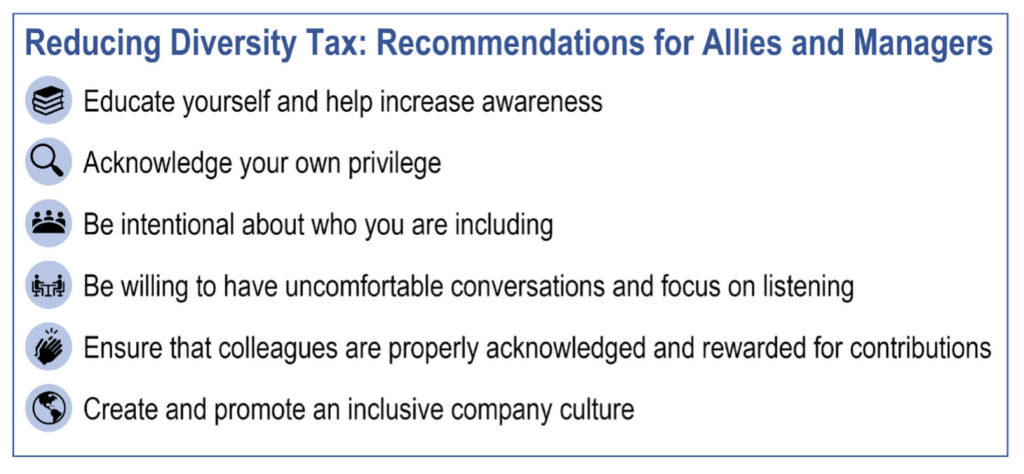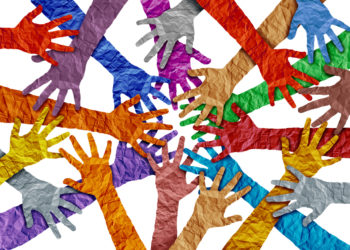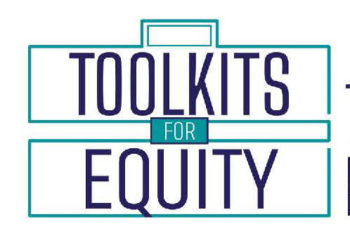Editor’s Note: This is the third in a series of posts that will run this week, written by Chhavi Chauhan, Shaina Lange, and Tony Chen. Chhavi is Director of Scientific Outreach at the American Society for Investigative Pathology (ASIP) and Director of the Continuing Medical Education (CME) Program at the Journal of Molecular Diagnostics. Shaina is Manager of the Publishing Integrity Office at ACS Publications. She oversees the strategy, policies, and activities to support publishing integrity across the ACS journals portfolio. Tony is a Journal Publishing Manager at Wiley, where he manages a portfolio of journals in Oncology, Pathology, and Basic Medical Science under the Health Sciences banner.
In our previous posts in this series, we first defined the diversity tax and its effect on employees from marginalized groups and then presented some suggestions for individuals who are affected by the diversity tax. Today’s post will focus on how allies can respond to the all-too-real burdens of the diversity tax on their colleagues.
It’s important to note here that, even if you don’t feel this additional burden yourself and/or your colleagues have not told you that they feel burdened, this does not mean that they don’t feel it. Many members of marginalized communities have been dealing with this issue for most of their lives. So if you want to be an ally, how can you help reduce or eliminate diversity tax?
“In the spirit of active allyship, the burden to educate shouldn’t only fall on marginalized communities. It is up to every one of us to work to understand the challenges faced by members of diverse groups, while also finding ways to support them.” (Understanding the emotional tax on Black professionals in the workplace)
Recommendations for individual allies:
- Educate yourself and help increase awareness. Our series of posts includes several resources about the cost of the diversity tax. Please take the time and effort to educate yourself and your network about it. Remember that seeking guidance from directly-affected individual(s) to educate you may just increase their burden; please bring this awareness to your diversity, equity, inclusion, and accessibility (DEIA) efforts and your interactions with colleagues.
- Acknowledge your own privilege. Consider that your experience may not match the experience of your marginalized colleagues. If someone from a marginalized community trusts you enough to express their concerns/frustrations, please take them seriously. Dismissing their concerns because they don’t match your experience is an example of poor allyship and may alienate them from you and/or the organization as shared by our anonymous contributor.
- Be intentional about who you are including. If you ask an individual from a marginalized community to serve on a project or committee, specify why you are asking them to participate so they don’t assume that they are being invited as a “token” contributor. If you can’t properly identify a specific reason for including them, please proactively reconsider your approach to the initiative.
“If you’re asking someone to participate in a DEI(A) activity, make it clear why they were chosen so they don’t feel tokenized.” — Anonymous Contributor
- Be willing to have uncomfortable or unpleasant conversations, and to focus on listening. If a member of a marginalized community refrains from participation, instead of retreating or not pursuing any further, take the time to reflect on the situation mindfully. In certain scenarios, you may want to ask if they’d be willing to talk about their decisions, listen and understand their answers, and be ready to accomodate any suggestions they may have for encouraging participation in future.
- Ensure that colleagues are properly acknowledged and rewarded for their contributions. If you are a manager or leader, take steps to ensure that individuals receive formal recognition for their contributions. If you’re a peer, seek opportunities to informally recognize them.
- Create and promote an inclusive company culture. In meetings, make sure there is a safe space for underrepresented individuals to share their thoughts candidly. Simply saying that you have an inclusive culture is not enough — you need to actively create this culture through your actions.
“If you want to hear from diverse voices, you need to make it a safe space for them to speak up. Understand that historically marginalized groups may not always feel comfortable being the sole dissenting voice in the room.” – Anonymous Contributor

We invite you to comment below (note that you can comment anonymously) on your experiences as an ally and/or as someone who has been on the receiving end of one of these tactics. What worked or didn’t work? Are there other recommendations you would make?
Many of these individual strategies require organizational support to be successful. In tomorrow’s post and the 4th of this series, we explore how organizations and those in leadership positions can help reduce the burden of diversity tax.
Discussion
9 Thoughts on "Guest Post – Reducing the Burden of Diversity Tax: Recommendations for Allies"
Sometimes it is hard to be an ally as I feel like it is perceived as not genuine. The building of a trusting relationship takes a great deal of time for both parties and hopefully all will give space to encourage this to happen. Some of us are altruistically offering our hand in partnership.
Hello, thank you for your comment. I think the key to being a good ally is to demonstrate that you are an ally with your actions. Telling people you are an ally without corresponding actions can lead to additional burdens, as we have discussed in our posts. The greatest sign of a true ally is when the people whom you are trying to be an ally for have described you as an ally. Self-proclaiming allyship (rather than demonstrating allyship through your actions) is actually one of the worst things you can do if you want to be a true ally.
These comments are very helpful. I really appreciate this set of articles, especially since the readers of this blog go across several generations of the work force.
Thank you so much for your comments.
I think these are some incredible recommendations. Standouts to me are
“specify why you are asking them to participate so they don’t assume that they are being invited as a “token” contributor. If you can’t properly identify a specific reason for including them… reconsider your approach to the initiative.”
and
“If someone from a marginalized community trusts you enough to express their concerns/frustrations, please take them seriously. Dismissing their concerns because they don’t match your experience…may alienate them from you and/or the organization”
Like many, I have privilege in some dimensions of my identity and less in others. Where I’m being minoritized, I’d certainly want allies to take some of the steps listed above. I hope to actively take the advice on board for spaces where I’m part of the majoritized group.
Thank you for your kind comments! Yes, I think the multiple aspects of our identities, some marginalized and perhaps some not, contribute to the overall idea of creating intersectional allyship for all marginalized communities.
Thank you so much for your comments. I am so glad that you found the recommendations worthwhile and that you plan to embrace them and put them in practice. Tony makes a very valid point about intersectional allyship.
As a white person I struggle with whether or not it’s appropriate for me to join DEI committees or teams. I don’t want to overstep something that isn’t supposed to be about me; after all, if these committees become full of white people then aren’t we crowding out the marginalized communities they are meant to serve? (see example from the first post in this series!) On the other hand I recognize that if I don’t join these types of committees it does unfairly place the burden of these activities squarely on the shoulders of the BIPOC community only. So I genuinely don’t know the best way to be an ally in these situations.
Hello, thank you for your comment. I think the third post in our series, focused on suggestions for allies, would be great for you to read. As for your specific situation, I replied to a previous comment that the best allies show that they are allies with their actions rather than just their words. I can’t speak to any context-specific circumstances for your individual situation, but from my perspective, joining the DEI committee and then centering the concerns of the communities you are trying to serve would seem to be the optimal strategy. This might lead to some uncomfortable conversations or reconfiguring your DEI priorities to match the priorities of your marginalized colleagues, but those conversations can be healthy and productive and create better allyship.


